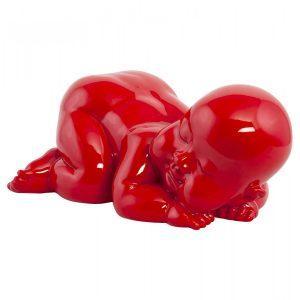 A beloved goddess who often adorns the altar of Chinese temple, Kuan Yin (also: Quan Yin, Kwan Yin, Quan Yin) is considered the goddess of mercy. Buddhist mythology suggests that there was a bodhisattva (enlightened being) has waived his right to enter the gates of heaven, as the cries of anguish of suffering on earth brought back. Instead of accepting the gift of endless happiness, it was the protector of human compassion instead. Kuan Yin was first described as a man, a Bodhisattva Avalokitesvara Indian very similar to the story of which is identical.
A beloved goddess who often adorns the altar of Chinese temple, Kuan Yin (also: Quan Yin, Kwan Yin, Quan Yin) is considered the goddess of mercy. Buddhist mythology suggests that there was a bodhisattva (enlightened being) has waived his right to enter the gates of heaven, as the cries of anguish of suffering on earth brought back. Instead of accepting the gift of endless happiness, it was the protector of human compassion instead. Kuan Yin was first described as a man, a Bodhisattva Avalokitesvara Indian very similar to the story of which is identical.
The image of Quan Yin as a woman began around the 12th century Many researchers believe that this is the influence of the Lotus Sutra, which suggested that Avalokiteshvara was a changeling who could take any shape necessary to end the suffering and anguish. He also had the power to grant children couples. This artists of the time probably due to present the Bodhisattvas as "Mother Goddess". dressed in his role as patron of women and comfort the sick and suffering, however solidified female images. Chinese Buddhists fully embraced the concept of woman Kuan Yin, although some cultures believe Kuan Yin be both a man and a woman, or just a spiritual being.
Kwan Yin is known by several different names. From "great mercy, compassion" for "the salvation of fear" to "a thousand arms and a thousand eyes" to describe his deep sympathy name, they are endless. It is also known as one of the big three, to change the field of nature and the Beast. Statues and sculptures in China Kuan Yin, represent the mother goddess as the pinnacle of beauty in flowing white robes. It is usually with a white cap on his head and carrying a vase with "holy dew." Other popular shows are the statues of Kuan Yin holds a child holding a rosary seen dragons Kuan Yin or Guanyin.Over time, his popularity grew and became regarded as the protector of sailors, farmers and travelers. Especially popular in southern China, which is worshiped in temples in the belief that he has the power to grant a family a child or a beautiful girl. It is a standard of beauty in Chinese culture considered and those who want to pay the supplement to the parents of a girl who could be described as a reference "Kuan Yin".
As Buddhists, Taoists Kuan Yin embedded in their religion. In addition, some of the new contemporary movements have included Kuan Yin in his teachings. As women religious symbols compassion, Kuan Yin and the Virgin Mary have many similarities. A period of Japanese history when Christianity must offer, Quan Yin Japanese Christians used as a substitute for the Virgin Mary. He remains a popular figure in the world to be a symbol of compassion and care.
Garden supply water Hercules Gardens Kew
One of the most popular attractions in Kew Gardens in England is the water fountain garden of Hercules in The Palm House Pond (as is well known, although tourists can only be called "palm pond" or "Hercules Pond") . Although originally built to add beauty and tropical humidity in the greenhouse next door (The Palm House), designers seemed that something seemed to be missing from sources outside garden. It was a statue.
Hercules welcomes

The sculpture of Hercules was not added until 1853. It is naked in the Greek tradition and snatch with a big angry snake (Greek god Achelus) on a large square base (called the base). The whole is more than six meters high. Now, the statue of the water fountain garden is called "Hercules Fighting Achelus", but usually only as "Herc".
François Joseph Bosio
The sculptor who has commissioned a heroic image in one of the sources of water to place the most visited gardens in the country was François Joseph Bosio (1768-1845), also known as Baron François Joseph Bosio. It was French, which seems to be somewhat confusing for the first water fountain garden of England. But here was the theme of Greek sculpture. England has always been a bit of an identity crisis had.Bosiso was heavily influenced by Greek and Roman art and most of his works are preserved in nature and purpose of the Greek and Roman myths. Most of the time these big naked men and horses. Other sculptures sit in museums around the world include "hyacinth his train waiting to release the record" at the Art Institute of Chicago and "Cupid with a bow" in St. Peters.
However Bosio is best known for the statues of angels and horses to the Arc de Trioumphe of Carrosel. How can he won the contract for the Hercules statue in the fountain in the garden of the Palm House pond is not known, but won in 1824 Bosio fame by another Hercules and the statue of the snake named "Hercules and the Hydra Lernaen ". Besides his work it is not much known about Bosio.

